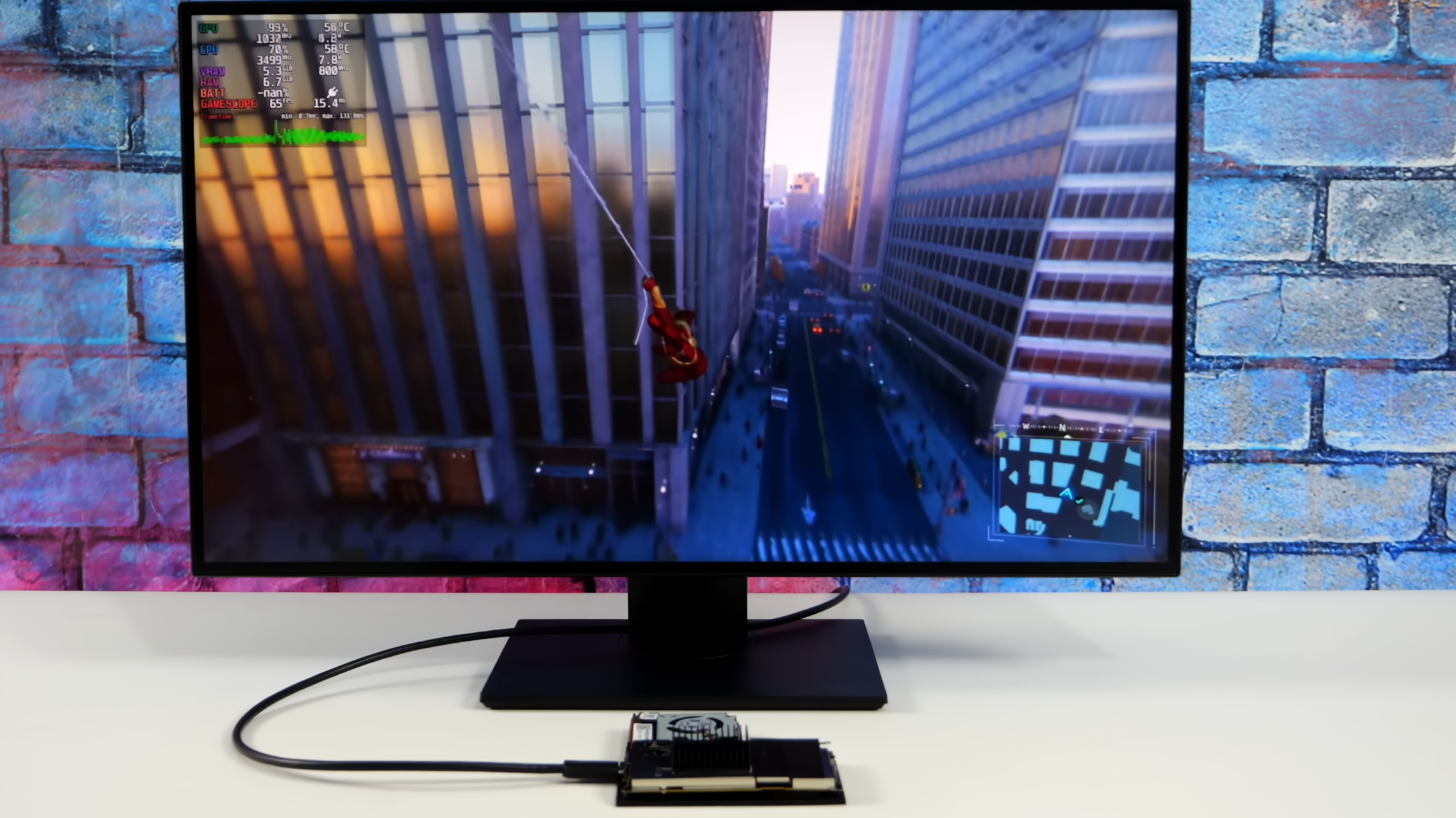Broken Steam Deck repurposed into an ultra-compact mini-PC — revived device features an extra heatsink for cooler operation
ETA PRIME repurposes the board of a broken Steam Deck to create a functioning mini-PC after adding a heatsink and storage

Valve's handheld Steam Deck is best known for its potential as a handheld gaming PC, but as it turns out, the Deck can also be used as a mini-PC in its own right, even after the screen has been broken and the Deck has been broken down for parts. Earlier today, YouTuber ETA PRIME showcased a video where he successfully extracted the motherboard and SoC from a Steam Deck to create a mini-PC.
So, how exactly was this done, and what makes it possible? The "how" is surprisingly simple: with the board intact, all ETA PRIME needed was to add an M.2 drive and attach an extra heatsink to get most of the way there after mounting the affair on some plastic. Then, the mostly-naked Deck internals were connected to a USB-C power hub doubling as a docking station, complete with 3 USB inputs and 1 HDMI out to allow the new Deck mini-PC to start successfully running on a monitor in "Docked" mode.
So...that's all it took! Thanks to the Deck having native support for a Docked mode and being entirely usable from within it, transforming it into a mini-PC ready to rock isn't all that difficult. The only real software issue that ETA PRIME encountered was the inability to perform BIOS updates without a battery attached, even though the system could run entirely off of wall power. While ETA ultimately attached a battery to circumvent this, he pointed out that the SteamDeck-BIOS-Manager available on GitHub may perform updates without a battery connected.
With the unit confirmed operational and connected to a 1080p, 120 Hz monitor, ETA PRIME tested Steam Deck mini-PC gaming performance across various games. Cyberpunk 2077 tested at 900p, Low settings with FSR Balanced enabled and managed a mostly stable 40 FPS. Forza Horizon 5 ran at the same 900p/FSR Balanced resolution settings but with Medium settings instead, averaging around 70 FPS. Meanwhile, Hades II ran at High Settings and 1080p with a primarily stable 120 FPS, with ETA noting that Medium would likely stabilize the FPS target entirely.
Finally, Spider-Man Remastered was run at 900p, Medium Settings with FSR 3.1 Frame Generation enabled, allowing the game to manage a fully playable ~75 FPS average. That's not bad for a handheld Steam Deck ripped down to its bare essentials to create a mini-PC—not bad at all. At this rate, a Steam Machine revival is becoming more feasible by the day.
Get Tom's Hardware's best news and in-depth reviews, straight to your inbox.

Christopher Harper has been a successful freelance tech writer specializing in PC hardware and gaming since 2015, and ghostwrote for various B2B clients in High School before that. Outside of work, Christopher is best known to friends and rivals as an active competitive player in various eSports (particularly fighting games and arena shooters) and a purveyor of music ranging from Jimi Hendrix to Killer Mike to the Sonic Adventure 2 soundtrack.
